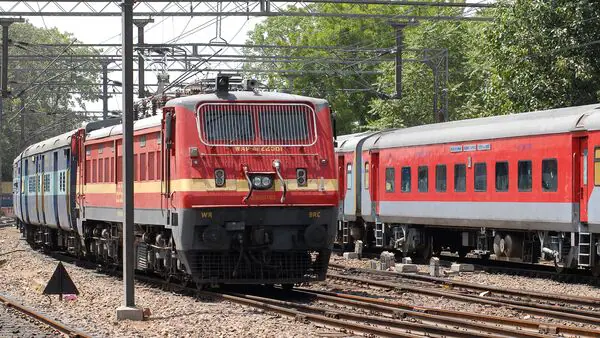My Journey from Delhi to Bihar: An Unforgettable Experience Traveling is not just about moving from one place to another—it is about exploring cultures, understanding traditions, and collecting memories. My journey from Delhi to Bihar was exactly that: a blend of excitement, curiosity, and discovery. The trip not only gave me the chance to see different landscapes and lifestyles but also helped me connect with my roots and appreciate the diversity of India.

Planning the Trip
It all began with a simple idea: to visit Bihar, the land of history, spirituality, and culture. Living in Delhi, I had often heard stories about the rich heritage of Bihar—Nalanda University, Bodh Gaya, the Sonepur Mela, Madhubani art, and of course, the delicious litti-chokha. But hearing about something and experiencing it firsthand are very different. I decided that this trip would not just be a vacation; it would be a journey to explore a new perspective. My Journey from Delhi to Bihar
Planning the travel was interesting. From Delhi to Bihar, there are many options: flights, trains, and buses. But for me, the train journey felt more authentic. Traveling by train allows you to witness the changing landscapes, meet fellow passengers, and feel the essence of India. So, I booked a ticket on the Rajdhani Express, which connects Delhi to Patna in about 12 hours. My Journey from Delhi to Bihar
The Train Journey: A Moving Canvas
The train departed from New Delhi Railway Station in the evening. The buzz at the station itself was an experience—porters rushing around, chaiwalas calling out, and families hugging their loved ones goodbye. As the train moved forward, I settled into my seat, ready to enjoy the ride. My Journey from Delhi to Bihar
What I love about train journeys is the window view. From the hustle of Delhi’s cityscape, the train slowly moved into the quiet fields of Uttar Pradesh. The sunset painted the sky with orange and purple hues, and villages appeared like tiny dots across the horizon. Vendors selling samosas, tea, and namkeen boarded the train at every stop, adding a local flavor to the experience. My Journey from Delhi to Bihar
During the journey, I interacted with co-passengers. One was a student traveling home for Durga Puja, another was a businessman from Patna. Their stories reflected the warmth and hospitality Biharis are known for. The conversations made the journey more enjoyable and gave me a sense of connection even before reaching the destination.
Arrival in Bihar
By the next morning, the train entered Bihar. The green fields, small huts, and the sound of birds welcomed me. Reaching Patna Junction was exciting—it felt like stepping into a city that carries both modern energy and ancient heritage. Patna, the capital of Bihar, has witnessed centuries of history—from the Mauryan Empire to British rule—and yet it continues to grow as a vibrant city. My Journey from Delhi to Bihar
Exploring Patna
My first stop was Golghar, a large granary built by the British in 1786. From the top, I got a panoramic view of Patna city and the Ganga River flowing majestically. Later, I visited Patna Sahib Gurudwara, one of the holiest Sikh shrines, where Guru Gobind Singh Ji was born. The peaceful atmosphere inside the gurudwara left me with a sense of calm and spirituality.
Another highlight was the Patna Museum. Here, I saw ancient sculptures, relics, and even a 200-million-year-old fossilized tree. It was fascinating to see how Bihar’s history stretches back thousands of years. My Journey from Delhi to Bihar
Bodh Gaya: The Land of Enlightenment
From Patna, I traveled to Bodh Gaya, about 100 km away. This is the place where Gautama Buddha attained enlightenment under the Bodhi Tree. Visiting the Mahabodhi Temple was a humbling experience. Pilgrims from all over the world come here to meditate, pray, and seek peace. The chants, the serene environment, and the sight of monks in saffron robes created an atmosphere of purity.
Sitting under the Bodhi Tree, I felt a deep sense of silence, as if time had stopped. It was a reminder of the power of spirituality and the importance of inner peace in our busy lives.
Nalanda and Rajgir: Echoes of the Past
No trip to Bihar is complete without visiting Nalanda, once the world’s most renowned university. Walking among the ruins of Nalanda University, I imagined the scholars who came here centuries ago from countries like China, Korea, and Tibet. The massive red-brick structures, libraries, and hostels are proof of India’s golden age of education.
Rajgir, nearby, is another gem. Surrounded by hills, it was once the capital of the Magadh kingdom. I took the ropeway to reach the Vishwa Shanti Stupa, a white-domed peace pagoda built by Japanese monks. From the top, the view of Rajgir was breathtaking.
Gaya: Culture and Tradition
On my way back, I visited Gaya, a city known for both Hindu and Buddhist traditions. The Vishnupad Temple, with its sacred footprint of Lord Vishnu, attracts thousands of devotees every year. During the Pitrupaksha Mela, people from across India come here to perform rituals for their ancestors. The blending of faiths in Gaya truly shows the unity in diversity of India.
Food Adventures in Bihar
One of the most exciting parts of my trip was the food. Bihari cuisine is simple yet full of flavors. The first dish I tried was litti-chokha—roasted wheat balls stuffed with sattu, served with mashed potatoes and brinjal. The smoky aroma and earthy taste made it unforgettable.
I also tasted khaja in Silao, a layered sweet that melts in your mouth, and the famous thekua, often made during Chhath Puja. Bihari-style fish curry and mutton curry were equally delicious. Every meal told a story of tradition and love for food.
Festivals and Culture
Though my trip was short, I was lucky to witness preparations for Chhath Puja, Bihar’s most important festival. The devotion of people, the songs, and the rituals performed on the banks of the Ganga were heart-touching. The culture of Bihar is deeply rooted in simplicity, respect for traditions, and community bonding.
Reflections on the Journey
Traveling from Delhi to Bihar was not just about sightseeing—it was about understanding a culture that is often misunderstood. Many people think of Bihar only in terms of migration and struggle, but my experience showed me a very different picture. Bihar is a land of knowledge, spirituality, art, and resilience.
The warmth of the people, the beauty of the landscapes, and the richness of the traditions left a lasting impression on me. I realized that traveling is not only about exploring places but also about breaking stereotypes and learning new perspectives.
Conclusion
My journey from Delhi to Bihar was a mix of discovery, adventure, and learning. From the crowded streets of Patna to the peaceful Bodhi Tree in Gaya, from the ancient ruins of Nalanda to the flavors of litti-chokha, every moment was memorable.
Bihar taught me that true beauty lies in simplicity and that history and culture are living forces that continue to shape our lives. If you ever plan a trip, do not hesitate to visit Bihar. It is not just a destination—it is an experience that will stay with you forever.
